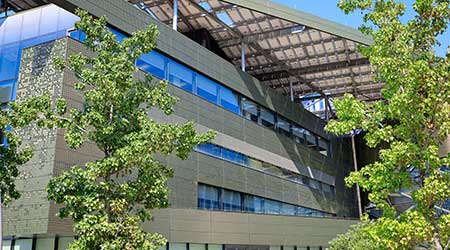Utility Rebates, Advice Aid Energy Efficiency Efforts
Most facility managers realize that utilities offer incentives. Still, sometimes there are misperceptions about the full range of utility incentives. Lacking a full understanding of how utility incentives work can mean a facility passes up not only rebates that can help defray costs of the project, but also useful technical advice about energy upgrades. Among the facilities that have taken advantage of such incentives are FHN Memorial Hospital in Freepot, Ill., and the Minneapolis Institute of Arts.
It's not surprising that utility rebates capture facility managers' attention. For example, since 2009, Consolidated Edison, commonly known as Con Ed, alone has paid out $189 million in incentives to 217,000 customers that made energy upgrades. It has several categories of energy efficiency programs that offer incentives, including one for large commercial and industrial facilities, explains Allan Drury, Con Ed spokesperson.
Incentives can cover a significant portion of the cost of an energy efficiency upgrade. When Columbia University upgraded its water-chilling system, including new metering equipment and programming software, so it could track and control energy use within the chiller plant, the upgrade came with a $2.25 million price tag. But Columbia got an early return on its investment in the form of $469,000 in incentives from Con Ed.
Rebates are only one type of incentive. Technical advice can be valuable as well. When FHN Memorial Hospital in Freeport, Ill., decided to do an energy assessment, the hospital contacted the Smart Ideas energy efficiency program from Commonwealth Edison Company (ComEd). The program provides free, high-level assessments to identify energy reduction opportunities eligible for incentives. Since 2008, Smart Ideas has saved $950 million on electric bills, according to ComEd.
As a result of the assessment, the hospital retrofitted some lighting with Smart Ideas financial incentives. A Smart Ideas representative then spoke with Rick Long, director of facility services for the hospital, about a deeper energy assessment of the facility and helped him connect with Grumman/Butkus Associates, a ComEd technical service provider, to conduct it.
Deep energy assessments can help facility managers prioritize short- and long-term capital improvements.
FHN Memorial Hospital's facility assessment identified 15 energy conservation measures. The hospital's administration and facility management team worked with ComEd and Grumman/Butkus to review and prioritize the energy conservation measures. "ComEd's facility assessment provided us with a comprehensive picture of our opportunities and the detailed analysis to act," Long says. The first project selected was to retrocommission the facility. "In addition to implementing retrocommissioning, we are now in the planning stages to convert our kitchen exhaust from constant volume to variable volume," he says.
More Than Energy
The Minneapolis Institute of Arts had installed LEDs in exit signs and other spaces, so it knew that efficient lighting could produce energy savings. But installing LEDs in the galleries had to take into account more than energy savings — it had to ensure that the lighting looked natural, making the art appear crisp and detailed.
The lighting designer and maintenance crew worked with Xcel Energy to consider options. The utility provides rebates and other incentives through a variety of programs.
"We had to wait for the right technology in order to make the investment in replacing so many LEDs," explains Sara Terrell, Xcel Energy account manager. "There was some trial and error, but when the technology was right, we were ready to put the project in motion." Over two phases lasting almost two years — and including painting the gallery walls to better suit the new lighting — staff replaced more than 8,300 lamps in more than 140 galleries, common areas, and offices at a cost of roughly $388,000.
The new lamps use about one-fifth of the energy that the halogens previously used and last about 22 times longer. The museum received a grant from the National Endowment of Humanities, as well as about $177,000 in incentives from Xcel Energy to help pay for the upgraded lighting.
Related Topics:













